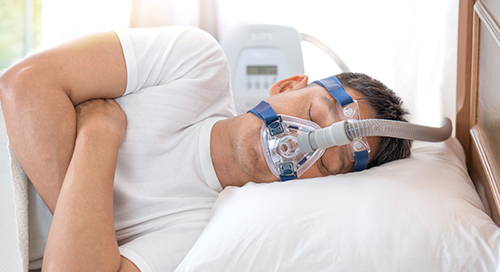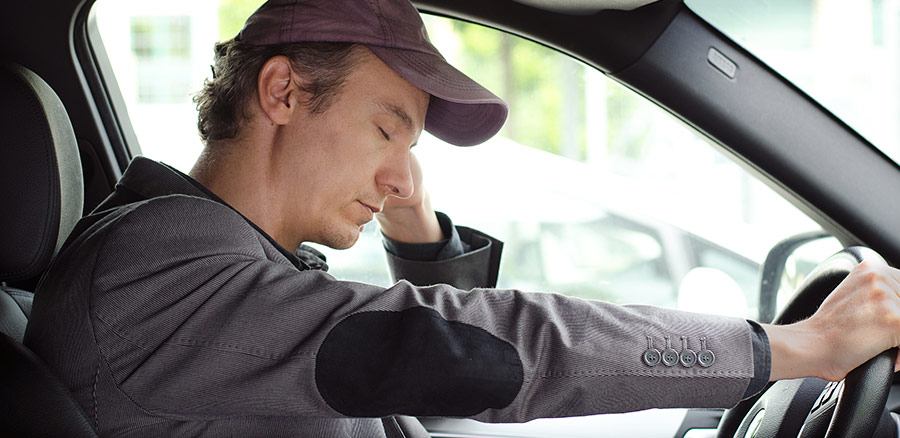Driver fatigue among commercial drivers is attracting more attention these days. As reported by the US Department of Transportation, distracted and drowsy driving together lead to an astounding 6,000 deaths and half a million injuries every year. But one fleet is doing something about it.
The folks at Ryder have established a driver fatigue prevention program that focuses on eliminating not only drowsy driving, but also the stigma behind it. Ryder’s program is helping to stop driver fatigue in its tracks before it becomes a problem for the fleet, and it’s a great model for other commercial fleets to follow.
Managing driver fatigue before an incident happens
The backbone of Ryder’s drowsy driving program is its “Captain of the Ship” policy.
“It mandates that a driver shouldn’t work if the work is unsafe for any reason—and that includes fatigue,” said Ryder Director of Safety Standards Bob Prim. “We understand that a driver can feel fine at the beginning of a shift and then start to feel fatigued. When that happens, we want our drivers to pull over in a safe place, communicate to us that they’re doing that, and take the rest they need without fear of repercussion.”
Ryder purposefully avoids reprimanding drivers for fatigue-related incidents, opting instead to understand why the event happened and prevent it from happening again. To help prevent a drowsy driving event from occurring, Ryder encourages drivers to take 15- to 25-minute power naps when they feel sleepy.
The initiative “has helped us to remove the stigma of weakness around driver fatigue,” said Rhonda McKown, CSP, Ryder’s Manager of Safety Standards and Technology and a former driver herself. Ryder’s dispatchers are trained to identify driver fatigue, and their astuteness helps keep drowsy drivers off the road, McKown said.
“When our dispatchers engage drivers in conversation, they look for signs of driver fatigue, such as ‘I was up all night and my wife was sick,’” she said. “The dispatcher tells the driver to take a nap if they feel tired. The support is there at Ryder, from upper management down to the driver at the ground level, and that facilitates our fatigued driver program’s success.”
Proactive driver fatigue initiatives propel success

To address fatigue before it happens, Ryder requires all of its drivers to take a 30-minute course that shows drivers how to manage fatigue on the road. The power naps are part of that training. The naps idea came from the National Sleep Foundation, who said a power nap could rest the mind and provide up to two hours of additional alertness for drivers.
“Taking breaks is not a weakness,” Prim said. “When your brain gets tired, it’s going to take a rest, and nobody can prevent that. But drivers can recognize that they’re fatigued, and they can pull over.”
Ryder’s driver fatigue course also encourages drivers to use their best judgment, be aware of how they’re feeling and take highway routes so they can pull over at a rest stop if they feel tired.
Lytx helps to identify drowsy drivers
But not all drivers do pull over when they feel fatigued. According to Lytx® data, a fatigued driver can be three times as likely to have a collision as one who’s not fatigued. Fortunately, Ryder uses Lytx to identify fatigued drivers and coach them on fatigue management. The program empowers Ryder to address driver fatigue head on.
“The [Driver Safety Program] has been crucial in helping us identify and manage fatigue,” Prim said. “The program sheds light on the fatigued behaviors that are taking place in the vehicle and it puts us in a position to do something about it.”
When the DriveCam® event recorder captures an unsafe, fatigue-related behavior such as nodding off at the wheel, the driver goes through the Ryder fatigue review process. The process looks at how the driver started their shift and whether or not they took their 30-minute break. It also looks at their sleeping patterns, their stress level, and if they have a health condition that could be impacting their sleep.
“We don’t always have drivers come to us when they feel fatigued,” Prim said. “But through the [driver] safety program, we have the opportunity to see what happened in a driver fatigue situation and to coach our drivers to be more aware of how they’re feeling so it doesn’t happen again.”
Coaches provide support and possible solutions for their drivers. “If a driver does nod off at the wheel, coaches talk to the driver about why they’re pushing themselves and why they didn’t take their break or an additional break,” Prim said. “The coaching concludes with commitment by the driver to pull over and take the rest needed should he/she need a break on a future run.”
So far, all the drivers who have been coached on fatigue through the Driver Safety Program haven’t had to be coached on it again.
“It’s always new people who are having fatigue events, and we’re constantly working with them to make sure they have the support they need,” Prim said.
“At Ryder, drivers can mention feeling fatigued without fear of reprimand," McKown said. "Consequently, drivers are more willing to admit to a manager that they didn’t get much sleep last night and in turn, the managers provide fatigue management tools.” The drivers feel the companys support and become part of the solution regarding their own fatigue management.
“It has had a positive impact across the fleet,” she said. “It’s simply saying, ‘When you become fatigued, here are the tools you can use.’”
Sleep apnea diagnosis and treatment

Ryder isn’t stopping at driver fatigue, either. The organization also partners with sleep experts and health care providers on sleep studies for its drivers, providing sleep apnea diagnosis and treatment at no cost to drivers. When a driver is suspected of having sleep apnea, Ryder sends the driver for a medical exam.
“If the doctor says they’re concerned about sleep apnea, we’ll do a sleep study and provide treatment,” Prim said. If treatment requires the driver to have a continuous positive airway pressure (CPAP) machine to help them sleep, Ryder pays for it by working with a third party to offset the cost.
“We work with sleep experts to identify ways drivers can get rest out on the road,” Prim said. “We talk with drivers about how heavy meals can make you feel sleepy, how caffeine is actually a depressant and the importance of sticking to your normal sleep cycle.”
According to Prim, Ryder’s driver fatigue initiatives became more targeted with advancements in safety technology. The Driver Safety Program “is the final piece of the puzzle for us in the battle against driver fatigue,” Prim said. “A driver may start a trip and feel great, but you can’t predict how his or her condition will change. The key is that you have tools in place to address those changes, and with the [driver safety] program, we do.”
